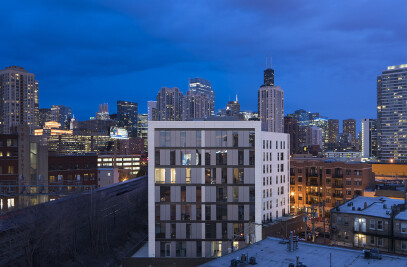The city of Syracuse, New York continues the transition from a postindustrial economy to one that is diversified in business type, smaller in skilled labor force, and far less reliant on manufacturing for commercial success. Yet Syracuse is fortunate. The university has become an incubator for long-term economic growth through a variety of community-based initiatives and programs—specifically channeled through the School of Architecture.
Syracuse University in collaboration with community organizations and neighborhood residents began the Near West Side Initiative “to combine the power of art, technology and innovation with neighborhood values and culture to revitalize Syracuse’s Near West Side neighborhood.” To help set a tone for building projects on the Near West Side, Brininstool + Lynch was asked to create a transformative design for the renovation of the Lincoln Supply Building as an important prototype for future development on the Near West Side, and as a case study for similar neighborhood initiatives.
Brininstool + Lynch collaborated with the Syracuse University School of Architecture, the Syracuse Center of Excellence, UPSTATE, and numerous local consultants and stakeholders from the community to develop a multi-use program, and to achieve a LEED Platinum rating upon completion. Consisting of two floors of commercial space and two floors for work/live residences, the goal is to nourish urban vitality with a range of uses throughout the day.
Changes to the building were designed to be of our time, capable of being affordably constructed, and sustainable to the extent that they provide significant energy savings to the occupant and user and have minimal impact on the environment during the construction process and long-term operations. Specifically, this included a geothermal system using heat pumps to accommodate all cooling and heating requirements, as well as a green roof and on-site rain gardens.
It was also a goal to objectively analyze what economic and human benefit the chosen green technologies represent, demonstrate how they can be realized and communicate the benefit to the project and for public knowledge.
https://www.brininstool-lynch.com/selected-work/lincoln-building

































